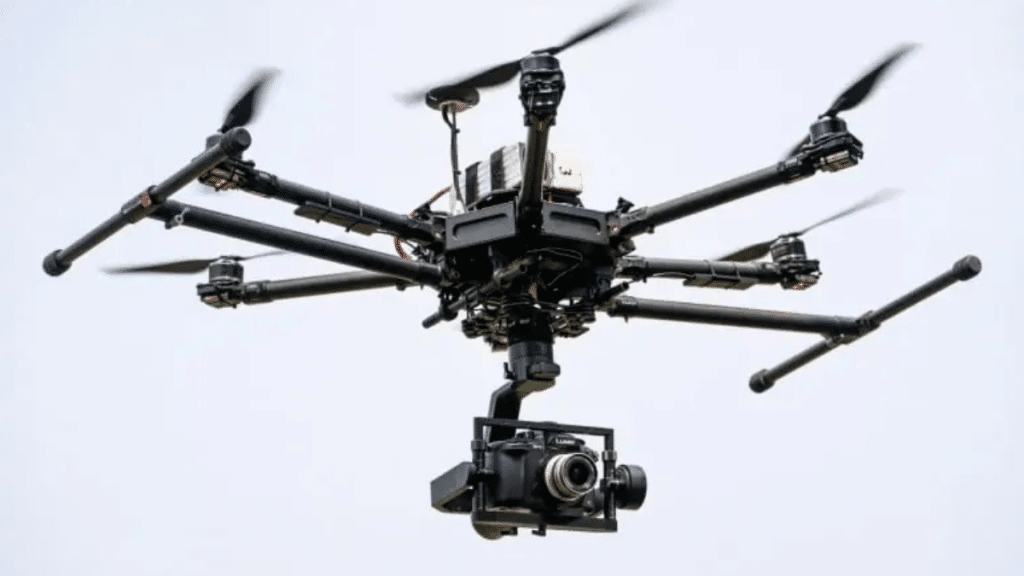Have you ever thought that a gimbal camera that weighs less than a bottle of mineral water can “see far, see clearly, and identify targets” at the same time? As the drone industry moves towards lightweight and intelligent, this small but powerful device is gradually changing our perception of “aerial vision”.
This device is called the K40T gimbal camera. It is not only light, but also very “smart”. Next, let’s take a look at how it has become an ideal partner for light drones.
1. Why are drones getting lighter?
In the early days of drone development, many platforms were large and heavy in order to carry as many devices as possible, such as high-definition cameras, infrared sensors, laser rangefinders, etc. This combination of “large platform + multiple mounts” is powerful, but it does not fly far and is not flexible to operate.
With the advancement of flight control, batteries, structural materials and other technologies, more and more users are turning to light platforms, such as folding quadcopters, vertical take-off and landing fixed wings, etc. The advantages of these “small guys” are portability, power saving, and easy control, but they also pose new challenges: the payload must be lighter and more integrated to avoid being a drag.
2. What did K40T do?
K40T was born in this context, and its design goal is to “put everything that can be loaded in, but never overweight.”
Let’s take a look at the key data of this product:
Weight: only 290 grams, friendly to light drones
Dual 48-megapixel cameras: one wide-angle view of the whole, one telephoto view of details
11x optical zoom + 160x hybrid zoom: can clearly identify targets even at a distance
640×512 infrared thermal imaging: can sense heat sources at night, in smoke or low visibility
Laser ranging: can measure up to 1,200 meters, with an accuracy of up to 0.1 meters
6TOPS AI computing power: can identify people, cars, and heat sources in real time during flight, and support target tracking
You can think of it as an “air multi-function camera” that can almost handle most industry-level flight missions.
3. Why is it suitable for “light flight platforms”?
In the past, if you want to have high-definition photography, thermal imaging, ranging and intelligent recognition at the same time, you may need to hang three or four devices, the overall weight exceeds 600 grams, and you also need complex wiring, debugging, and supporting software.
The K40T solves all these problems with just one gimbal camera, greatly saving space and battery energy consumption.
This is crucial for light drones:
* Save battery and fly farther
* Lighter equipment and more stable flight
* Faster deployment and faster task response
Many industry operations, such as power inspection, forest fire warning, traffic law enforcement, etc., have begun to use a combination of light drones + K40T. Actual combat data shows that without increasing the complexity of the platform, the inspection efficiency has increased by more than 20%, the flight time has been extended by 15%, and the number of deployments has increased.
4. Real application cases are convincing
In a mountainous power company in China, the inspection team used a light drone equipped with K40T to inspect high-voltage lines. The operator took off from the foot of the mountain and clearly captured the damage of the insulator on the iron tower dozens of meters away through 11x optical zoom. Then the thermal imaging module also identified a slight overheating of a contact point.
All this was done with just one device, one operator, and one flight.
In the past, they needed two drones, multiple cameras and a three-person team to operate, which was not only time-consuming and labor-intensive, but also easy to miss hidden dangers.
5. Intelligent tracking and identification, taking “flying vision” a step further
K40T can not only “see”, but also “understand”. The AI chip it carries has a computing power of 6TOPS. What does this mean? Simply put, it can make tens of thousands of judgments and calculations per second, such as:
Automatic identification of people or vehicles: It can automatically identify or not manually select, and automatically lock the target during flight
Target tracking: Even if the target moves, it can keep locked and adjust the camera angle to track
Heat source analysis: In complex environments, quickly screen out “problematic places”
This is very practical for public security deployment, emergency search and rescue and other tasks. Drones are no longer just “aerial photography tools”, but front-line perception systems with “judgment”.
6. Conclusion: Future drones need this “light + strong” combination
K40T represents not only a hardware product, but a microcosm of a trend: smaller equipment, more complete functions, and stronger intelligence.
Today, when “lightweight platforms have become mainstream”, what we need is no longer to stack more equipment, but to complete more tasks with a smaller volume. The K40T is just such a “micro all-around solution”.
If you are looking for a gimbal camera that is suitable for light drones and can perform professional tasks, the K40T will be the answer that allows you to “use one machine for multiple purposes”.
